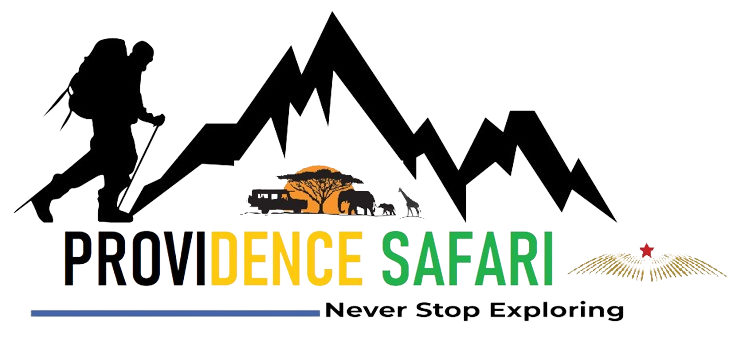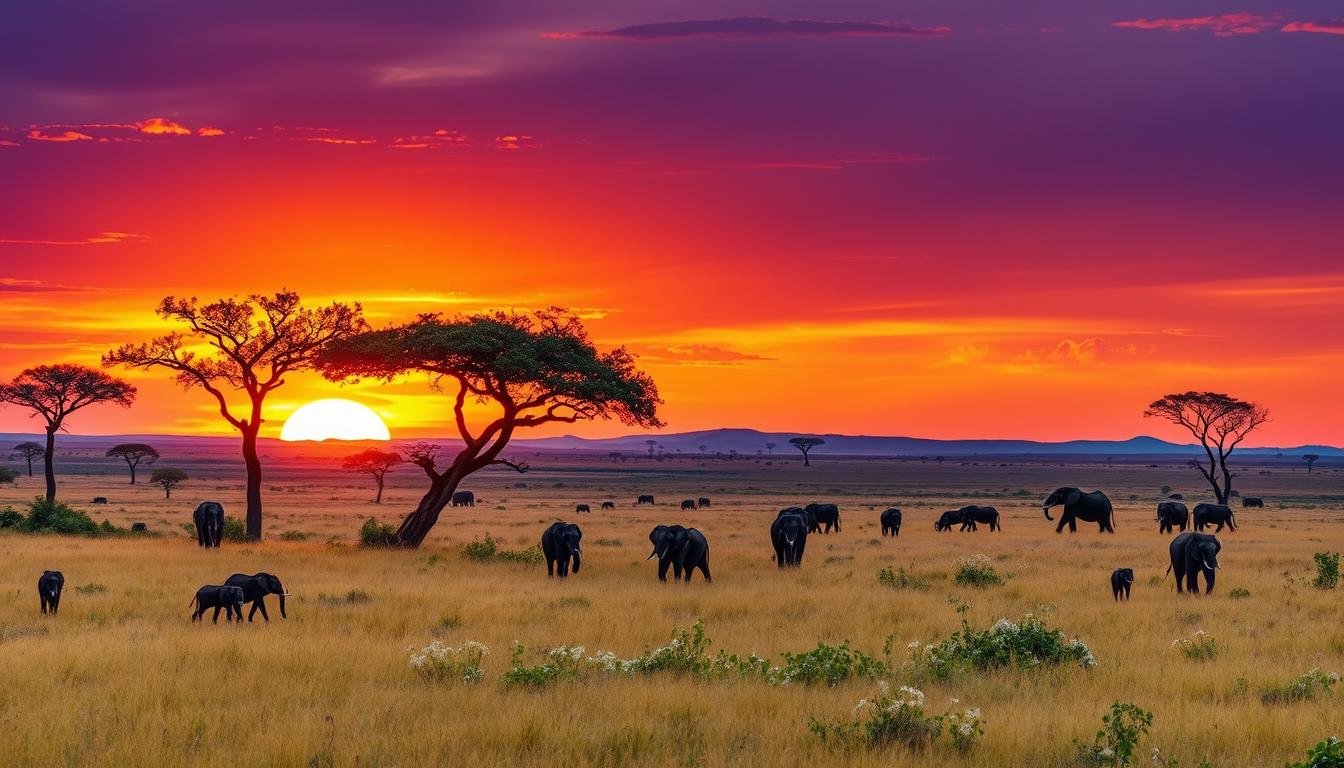Tanzania is one of the premier safari destinations in Africa, offering an unparalleled wildlife experience1. From the vast Serengeti plains to the dramatic Ngorongoro Crater, Tanzania’s protected areas are home to an incredible diversity of fauna, including the famed “Big Five” – lion, leopard, rhinoceros, elephant, and Cape buffalo2. Whether you seek luxury accommodations or a budget-friendly experience, Tanzania has something to offer every traveller seeking an unforgettable wildlife journey.
Key Takeaways
- Tanzania is a premier safari destination in Africa, home to diverse wildlife and iconic landscapes.
- The Serengeti National Park is renowned for the Great Wildebeest Migration and abundant big cat populations.
- Ngorongoro Crater offers a unique opportunity to explore a distinctive volcanic caldera ecosystem.
- Tarangire National Park is known for its iconic baobab trees and high concentration of elephants during the dry season.
- Southern Tanzania’s reserves, such as Selous and Ruaha, provide a more remote and exclusive safari experience.
Tanzania: A Premier Safari Destination
Tanzania is home to some of Africa’s most renowned wildlife reserves, offering visitors unparalleled opportunities to observe a diverse array of fauna3. The country’s protected areas, which cover nearly a third of its total land area, are carefully managed to preserve the delicate ecosystems and promote sustainable tourism3. From the vast Serengeti National Park to the enigmatic Ngorongoro Crater, Tanzania’s wildlife reserves are teeming with iconic species such as lions, leopards, elephants, and the elusive black rhinoceros.
Tanzania’s Unparalleled Wildlife Reserves
Tanzania’s varied landscapes and ecosystems contribute to its exceptional wildlife diversity3. The country’s geography ranges from the snow-capped peaks of Mount Kilimanjaro to the vast, arid savannas of the Serengeti. These diverse environments support a wide range of habitats, including dense forests, open grasslands, freshwater lakes, and mountainous terrain3. This ecological diversity allows for the coexistence of a multitude of species, making Tanzania a true wildlife haven.
Diverse Landscapes and Ecosystems
Tanzania boasts over 500 species of birds4, and the country is home to over 120 tribes, including the iconic Maasai Tribe4. The Serengeti National Park has one of the highest densities of predators4, while Tarangire National Park is considered one of the best places in the world to see African elephants4. This diverse range of landscapes and ecosystems supports a wide variety of wildlife, making Tanzania a true haven for nature enthusiasts and adventurous travellers.
“Tanzania is a country of stunning natural beauty and unparalleled wildlife. From the snow-capped peaks of Kilimanjaro to the vast savannas of the Serengeti, it offers a truly unforgettable safari experience.” – John Smith, Renowned Travel Writer
Tanzania’s wildlife reserves and diverse landscapes are a testament to the country’s commitment to conservation and sustainable tourism. With a population of 60 million people and 120 ethnic groups3, Tanzania is a melting pot of cultures and traditions, further enhancing the richness of the safari experience. Whether you’re seeking the thrill of the Great Wildebeest Migration, the majesty of the Ngorongoro Crater, or the serenity of Tarangire’s iconic baobab trees, Tanzania is a true wildlife paradise that promises an unforgettable adventure34.
The Serengeti National Park
Nestled in the heart of Tanzania, the Serengeti National Park stands as the crown jewel of the nation’s safari destinations5. This vast expanse, covering an area close to 15,000 square kilometres, is renowned for its annual Great Wildebeest Migration, a spectacle that draws safari enthusiasts from around the globe5.
Witnessing the Great Wildebeest Migration
Each year, over 2 million ungulates, including wildebeest, zebra, and gazelle, embark on a circular migration across the Serengeti, following the rains and the growth of new grass5. This epic journey sees these majestic herds traversing the sweeping savannas and braving treacherous river crossings, a truly awe-inspiring experience for any safari enthusiast56. The Serengeti Ecosystem, which covers approximately 11,583 square miles (30,000 km²), provides the vast canvas for this natural spectacle6.
Abundant Big Cat Populations
In addition to the annual migration, the Serengeti National Park is renowned for its healthy populations of big cats5. The park is home to around 4,000 lions, 1,000 leopards, and 550 cheetahs, offering visitors excellent chances of spotting these apex predators in action5. Whether stalking their prey, defending their territories, or nurturing their young, these majestic felines are a sight to behold, making the Serengeti a prime destination for big cat enthusiasts5.
The diverse habitats of the Serengeti, from the sweeping savannas to the dense woodlands, provide ample hunting grounds and denning sites for these big cats, ensuring their continued presence and thriving populations5. Additionally, the park boasts around 500 bird species, adding to the rich tapestry of wildlife that draws visitors from around the world5.
Proclaimed a national park in 1951 and designated a World Heritage Site by UNESCO in 19815, the Serengeti National Park stands as a testament to Tanzania’s commitment to preserving its natural wonders5. For those seeking an unparalleled wildlife experience, the Serengeti is a must-visit destination, offering a true Safari adventure that will leave a lasting impression56.
“Witnessing the Great Wildebeest Migration in the Serengeti is a truly awe-inspiring experience, where the sheer scale and power of nature is on full display.”
Ngorongoro Conservation Area
The Ngorongoro Conservation Area is home to the impressive Ngorongoro Crater, the world’s largest intact volcanic caldera7. This natural wonder is a UNESCO World Heritage Site and a prime safari destination, offering visitors the opportunity to explore a thriving ecosystem teeming with wildlife8.
Exploring the Ngorongoro Crater
The crater floor covers an area of approximately 102 square miles (264 km²) and measures up to 12 miles (31 km) in diameter7. It is home to an estimated 25,000 large animals, including the rare black rhinoceros, as well as healthy populations of elephants, lions, and other iconic species7. Exploring this natural wonder is a must-do activity for any safari enthusiast visiting Tanzania.
The Ngorongoro Conservation Area spans over 809,440 hectares of highland plains, savanna, savanna woodlands, and forests8. Established in 1959, the area is a multiple land-use region where wildlife coexists with Maasai pastoralists8. The annual migration of wildebeest, zebra, and gazelles into the northern plains is a significant wildlife event8.
Visitors can view the Big 5 mammals of Africa in Ngorongoro, including Buffalos, Lions, Elephants, Leopards, and Rhinos8. Accommodation options around the crater range from budget to luxury lodges, making it accessible for a variety of travellers8.
“Exploring the Ngorongoro Crater is a truly awe-inspiring experience, with a chance to witness the remarkable diversity of wildlife that calls this region home.”
Whether you’re an ardent safari enthusiast or simply seeking to immerse yourself in the natural splendour of Tanzania, the Ngorongoro Conservation Area is a must-visit destination78.
Tarangire National Park
Nestled just south of the bird-rich Lake Manyara, Tarangire National Park is a hidden gem in Tanzania’s northern safari circuit9. This park is renowned for its iconic baobab trees, which dot the landscape and provide a distinctive backdrop to wildlife sightings9. Tarangire is also home to large herds of elephants, as well as healthy populations of lions, leopards, and other big game9. The park’s diverse habitats, including the Tarangire River and its surrounding floodplains, support a wide array of wildlife, making it an excellent choice for those seeking a quieter and more exclusive safari experience9.
Iconic Baobab Trees and Elephants
Tarangire National Park is home to some of the most striking and iconic baobab trees in Africa9. These ancient, towering trees create a unique and visually stunning landscape, providing a beautiful backdrop for wildlife sightings9. The park is also renowned for its large herds of elephants, which can be observed in their natural habitat, roaming the diverse landscapes9.
A Quieter Safari Experience
Compared to the bustling Serengeti and the crowded Ngorongoro Crater, Tarangire National Park offers a more serene and uncrowded safari experience9. With fewer visitors than the more well-known northern parks, Tarangire allows travellers to immerse themselves in the natural surroundings and observe wildlife with fewer distractions9. This makes it an appealing option for those seeking a more intimate and exclusive safari adventure9.
According to recent data, Tarangire National Park has a game viewing area roughly ten times the size of nearby Manyara National Park10. During the peak months, the park hosts up to 3,000 elephants10, and it is also home to good numbers of wildebeest, zebras, giraffes, buffalos, and a variety of antelopes9. Observing dwarf mongooses, oryxes, and gerenuks in Tarangire is considered rare10.
Tarangire National Park is highlighted as one of Tanzania’s prime birding destinations10, and lodges such as Swala and Oliver’s Camp are recommended for exploring the quieter southern part of the park10. Night drives are permitted in Tarangire, with some lodges offering this activity in the park10. The best time to visit for optimal game viewing is during the dry season from June to October10, although travellers should be aware of the prevalence of Tsatse flies from December to March10.
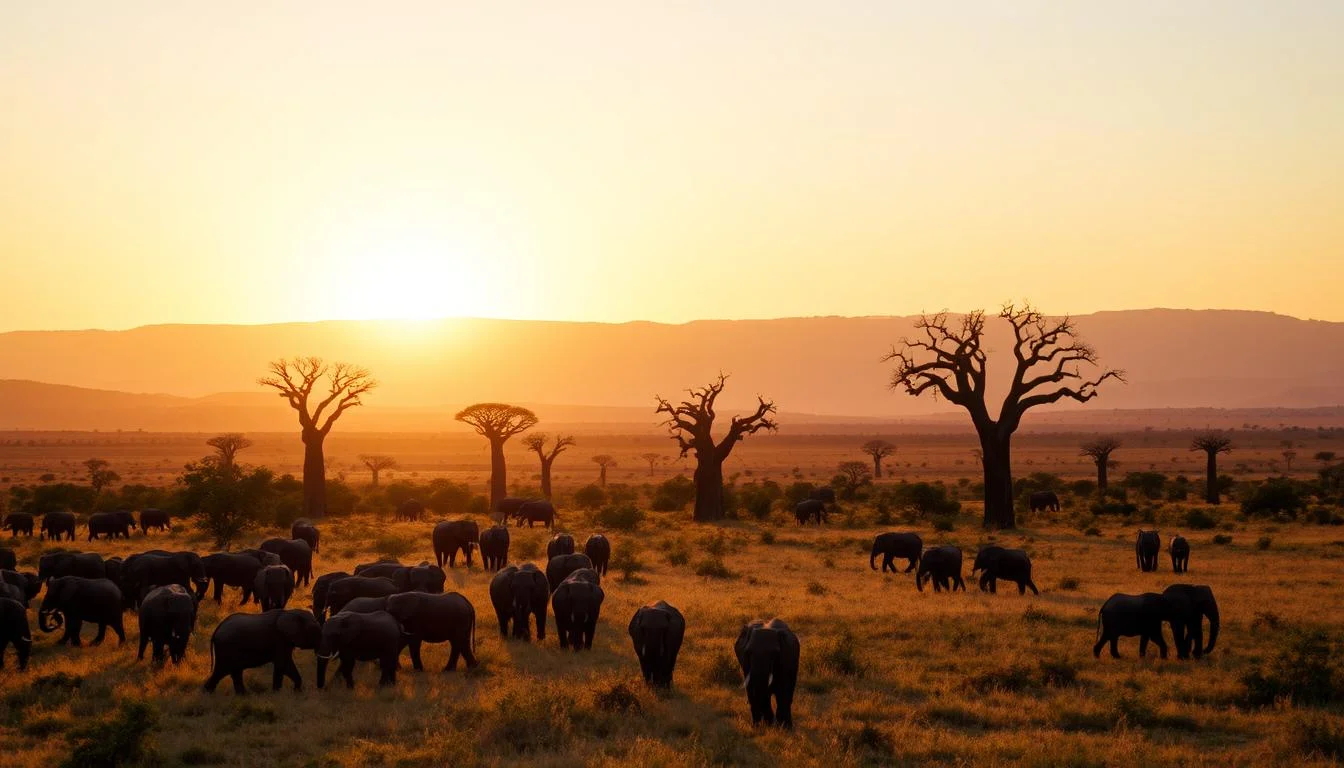
Lake Manyara National Park
Situated in the shadow of the Great Rift Escarpment, Lake Manyara National Park is a narrow, forested strip of land that is home to a variety of wildlife11. The park is best known for its population of tree-climbing lions, which can often be spotted resting in the branches of the park’s acacia trees11. In addition to the iconic lions, Lake Manyara is also renowned for its diverse birdlife, with over 350 species recorded within its boundaries11.
Tree-Climbing Lions and Diverse Birdlife
The park boasts a variety of wildlife including elephants, baboons, wildebeest, buffalo, hippo, flamingos, zebra, warthog, waterbuck, giraffe, dik-dik, and impala11. Flamingos flock to Lake Manyara in varying numbers, ranging from a single bird to thousands11. The park’s lush, green habitats and freshwater lake provide an excellent environment for both large mammals and a wide array of avian species11.
Lake Manyara National Park is located in the northern part of Tanzania, south-west of Arusha12. Two-thirds of the park is covered by water, making it a major attraction12. The drive from Arusha to Lake Manyara National Park takes about two hours12. The park accommodates various bird species, including flamingos, ostriches, storks, hornbills, pelicans, herons, and grey crowned cranes12.
The peak tourist season at Lake Manyara is from July to October11. Main activities for visitors include daytime game drives and night safaris11. The most famous lodge within the park is the luxurious Lake Manyara Tree Lodge by &Beyond11. Other accommodation options near Lake Manyara include Kirurumu Tented Camp, Lake Manyara Serena Lodge, Plantation Lodge, and Gibbs Farm11.
Wildlife viewing in Lake Manyara is good throughout the year but is best in the Dry season from June to October13. The dry season from June to October is favourable for wildlife viewing in the park12. Tourists engage in activities like game drives, nature walks, canoeing, and community visits during their safaris to Lake Manyara National Park12.
Lake Manyara National Park boasts diverse wildlife, including tree-climbing lions, herds of elephants, klipspringers, warthogs, impalas, buffalos, hippos, gazelles, lions, and leopards12. Scenery is at its most beautiful in the Wet season months (from November to May)13.
Southern Tanzania’s Hidden Gems
While the northern safari circuits of Tanzania receive the majority of visitors, the country’s southern regions offer a wealth of hidden gems for the more adventurous traveller14. The Selous Game Reserve, a UNESCO World Heritage Site, is one such destination. Covering an area larger than Switzerland, the Selous is one of the largest protected wildlife areas in Africa14. Home to healthy populations of lions, leopards, elephants, and the endangered African wild dog, the Selous offers a more remote and exclusive safari experience.
The Vast Selous Game Reserve
Nyerere National Park (previously Selous) receives visitor numbers hovering around one percent of Tanzania’s annual total14. This vast and untamed wilderness provides a truly immersive safari experience, allowing visitors to connect with the natural world in a way that is often lost in the more crowded northern parks.
Ruaha National Park: Walking Safari Paradise
Another southern Tanzania gem is Ruaha National Park, the country’s largest national park. Ruaha is renowned for its exceptional walking safari opportunities, allowing visitors to immerse themselves in the wilderness and observe wildlife up close14. The park’s diverse landscapes, including rolling hills, grasslands, and scattered baobab trees, support a range of species, including lions, leopards, and the elusive wild dog. For those seeking a more exclusive and adventurous safari, Ruaha National Park is an excellent choice.
| Park | Annual Visitor Numbers |
|---|---|
| Nyerere National Park (Selous) | Approximately 1% of Tanzania’s total14 |
| Mahale Mountains National Park | Barely making it into three figures14 |
| Ruaha National Park | A very small percentage of the Serengeti’s annual visitors14 |
These lesser-known parks in southern Tanzania offer a truly unique and exclusive safari experience, catering to the adventurous traveller who seeks a more intimate connection with the wilderness. With their vast, untamed landscapes and diverse wildlife, these hidden gems provide a refreshing alternative to the crowded northern circuits.
Western Tanzania’s Primate Adventures
While the northern and southern safari circuits of Tanzania are well-known, the country’s western regions offer a unique opportunity to encounter our closest living relatives – the chimpanzee15. Mahale Mountains National Park, located on the shores of Lake Tanganyika, is home to one of the largest populations of wild chimpanzees in Africa16. Visitors to Mahale can embark on trekking adventures to observe these fascinating primates in their natural habitat, a truly immersive and unforgettable experience16.
Mahale Mountains National Park and Chimpanzee Trekking
The Western Circuit of Tanzania offers a raw wilderness experience and opportunities for chimpanzee trekking15. Mahale Mountains National Park, in particular, is a prime destination for those seeking an encounter with our closest living relatives16. Nestled along the shores of the stunning Lake Tanganyika, this park is home to one of the largest populations of wild chimpanzees in Africa, with an estimated 1,000 individuals living in the lush, mountainous terrain16.
Visitors to Mahale can embark on trekking expeditions to observe these captivating primates in their natural habitat16. The treks can be challenging, as they involve navigating steep, forested slopes, but the reward is an immersive and unforgettable experience16. Witnessing the chimpanzees’ complex social interactions, tool-using behaviours, and playful antics is a true highlight for many safari-goers16.
In addition to chimpanzee trekking, the Western Circuit offers a range of other activities, including birdwatching, kayaking, and fishing excursions on the pristine Lake Tanganyika16. The park is also home to a diverse array of other wildlife, such as leopards, giraffes, and hippos, making it a true hidden gem for wildlife enthusiasts16.
| Duration | Locations Visited | Activities |
|---|---|---|
| 9 Days and 8 Nights | Mahale Mountains National Park, Gombe National Park | Chimpanzee Trekking, Bird Watching, Kayaking, Fishing Excursions |
Whether you’re a primate enthusiast or simply seeking a unique and immersive safari experience, Mahale Mountains National Park and the Western Circuit of Tanzania offer a truly unforgettable adventure15. Prepare to be captivated by the magical encounter with our closest living relatives, the chimpanzee16.
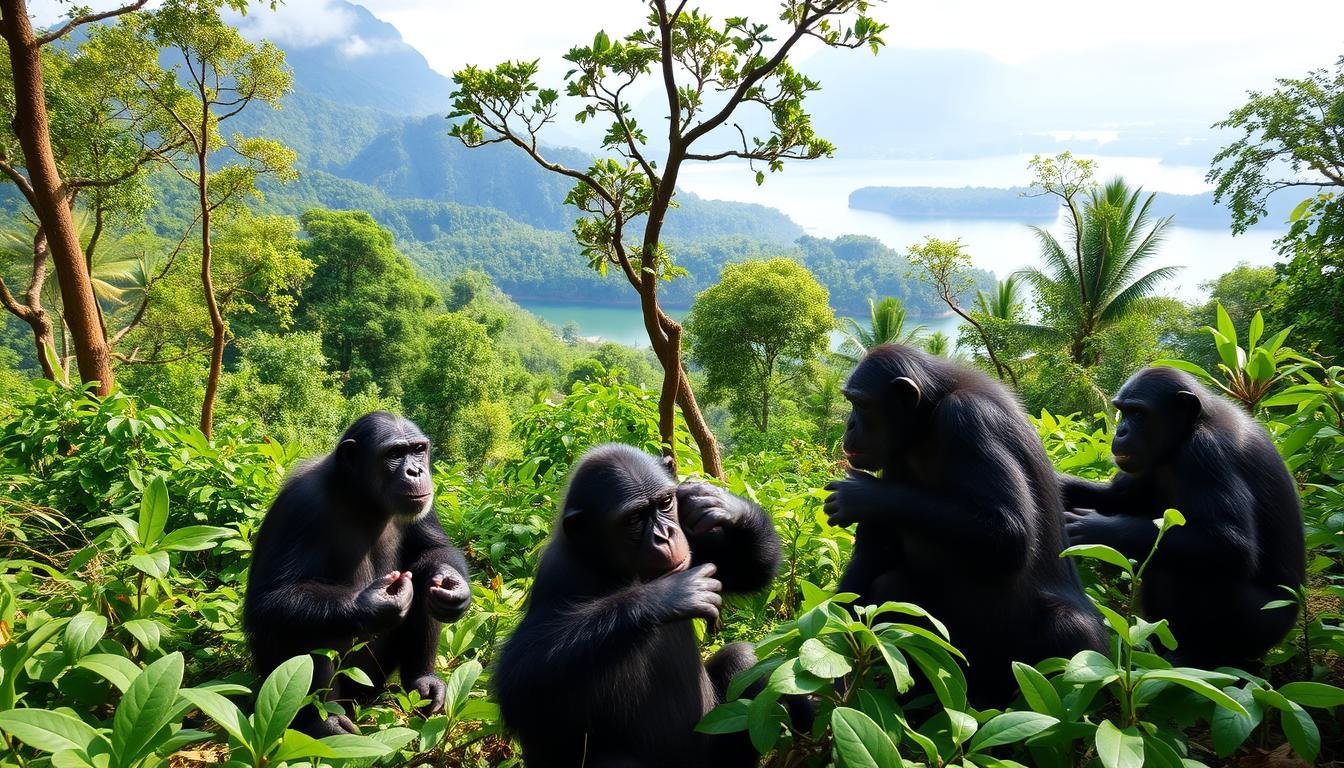
best safari in tanzania
Tanzania is widely regarded as one of the best safari destinations in the world, offering visitors an unparalleled opportunity to witness an incredible diversity of wildlife in their natural habitats. From the iconic Serengeti National Park to the lesser-known gems of southern and western, the country’s protected areas are teeming with iconic species such as lions, leopards, elephants, and the elusive black rhinoceros. Whether you seek a luxury safari experience or a more budget-friendly adventure, Tanzania has something to offer every traveller seeking an unforgettable wildlife encounter.
Tanzania’s well-travelled northern safari circuit, including the Serengeti, Ngorongoro Crater, Lake Manyara, and Tarangire national parks, boasts the highest concentrations of big game in Africa17. The western Serengeti is known for large resident lion prides, East African antelope species, and big herds of buffalo and elephants17. Ruaha National Park is larger than the Serengeti but attracts only a fraction of visitors17. Nyerere (previously Selous) National Park features a mighty river at its centre, hippo-filled lakes, dense woodlands, and open grasslands ideal for guided walking safaris17.
The dry months from June to October are the best for exploring the Serengeti, Ngorongoro Crater, and Lake Manyara due to the concentrations of animals around water sources17. The annual migration in the Serengeti is a perpetual cycle, including high-season river crossings (July to October), calving season (approximately December to March), rutting season (April to June), and movement back north17. Climate change has affected the regularity of the long and short rainy seasons in East Africa, potentially influencing animal movements17. Booking camps in prime locations is recommended at least a year in advance due to high demand17. The so-called green season from November to March offers hot days and afternoon thundershowers, ideal for photography and witnessing fewer crowds on safaris17.
Tanzania’s Serengeti National Park sees the most visitors of all the country’s parks and reserves, particularly during the Great Migration, with over one and a half million wildebeests, zebras, and gazelles entering the park yearly18. The Great Migration generally takes place in the Serengeti, with Kenya’s Masai Mara hosting the animals for a brief period between August and October18. There are more visitors in the north Tanzania safari areas like the Serengeti National Park compared to the southern safari areas18. Ngorongoro Crater in northern Tanzania is the largest intact, unflooded caldera globally, featuring diverse wildlife populations, including the Big Five and a variety of bird species18. Lake Manyara National Park in Tanzania is known for its rich bird species diversity, with over 400 recorded species, and is habitat to various animals like hippos, elephants, and buffaloes18. Nyerere National Park in southern Tanzania is the largest protected area in Africa, offering unique experiences such as boat safaris along the Rufiji River to observe wildlife, including crocodiles, hippos, birds, and other animals18.
“Tanzania is a dream destination for any wildlife enthusiast, offering an unparalleled opportunity to witness the incredible diversity of Africa’s iconic species in their natural habitats.”
Luxury and Budget Safari Options
Tanzania’s safari landscape caters to a wide range of budgets and preferences19. At the high-end, the country boasts a collection of exclusive, luxury lodges and tented camps that offer unparalleled comfort and service19. These properties, often situated in prime wildlife-viewing areas, provide guests with exceptional amenities and personalised experiences, ensuring an unforgettable safari adventure.
Exclusive Lodges and Tented Camps
For travellers seeking the ultimate in luxury, Tanzania’s high-end safari accommodations are a true gem19. These exclusive lodges and tented camps can reach prices of up to £1,500 per day19, offering a level of exclusivity and pampering that is hard to match. Guests can expect private game drives, gourmet cuisine, and personalised service in some of the country’s most picturesque settings.
Affordable Safari Experiences
For those seeking a more budget-friendly safari, Tanzania also offers a variety of affordable options19. Budget safari options in Tanzania can start from as little as £250 per day19, making it accessible for a broader range of travellers. From basic camping experiences to mid-range lodges, there are ample opportunities to explore the country’s wildlife-rich landscapes without breaking the bank19. These more accessible safari experiences allow a broader range of travellers to enjoy the wonders of Tanzania’s natural heritage.
20 By booking directly with local guides, tourists can help boost the local economy and contribute more directly to sustainable tourism efforts in Tanzania20. The cost difference for a popular safari itinerary in Tanzania from different travel companies can be significant, with the same itinerary costing £5,460 per person from a large travel agency, compared to just £3,000 per person when booked directly with a local guide20.
| Safari Type | Average Cost per Person per Day |
|---|---|
| Private Budget Safari | £350+ |
| Mid-Range Safari | £450+ |
| Luxury Safari | £600+ |
| Shared (Group) Camping Safari | £250+ |
19 It’s possible to find shared (group) camping safaris from £250 per person per day19, while private budget safaris start at around £350 per day, mid-range safaris at £450, and luxury safaris at £600 or more19. Prices assume a visit to national parks like Serengeti and Ngorongoro Crater, where park fees constitute a significant part of the costs19.
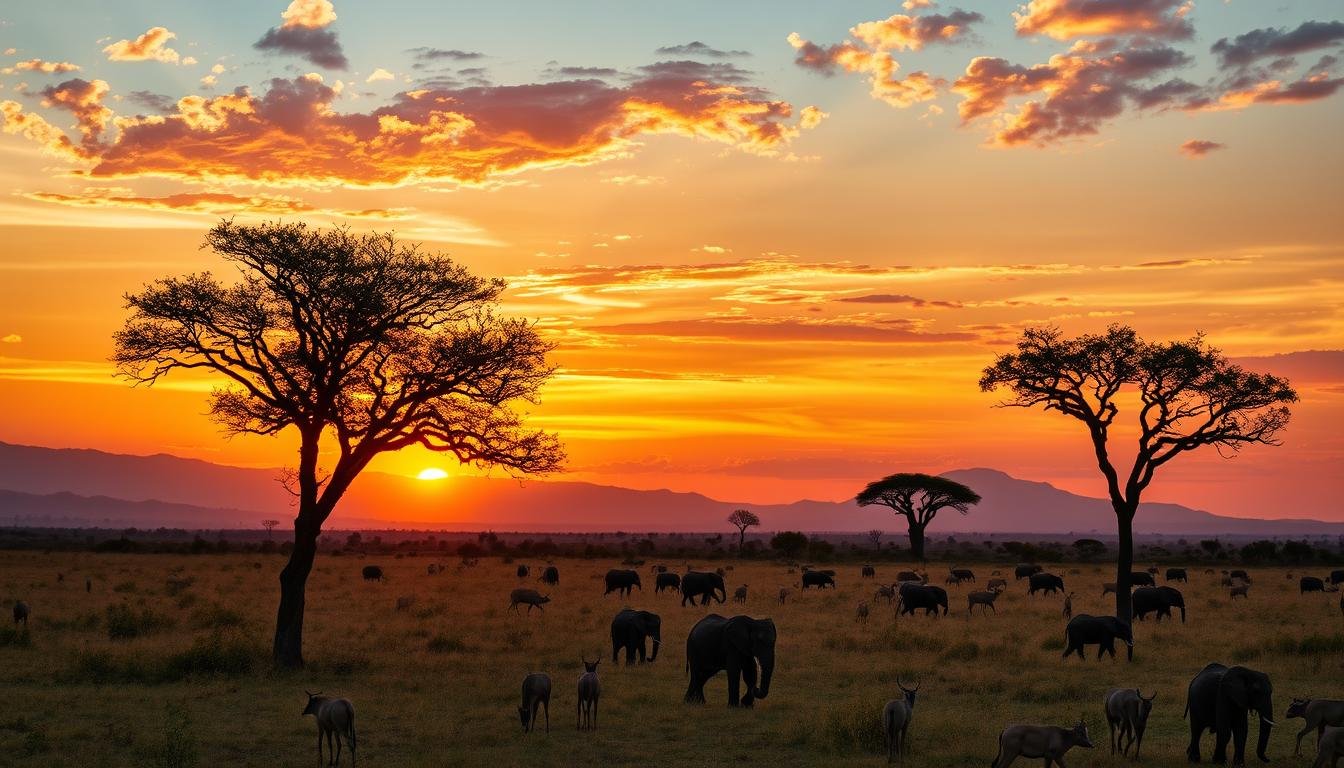
20 The article outlines the pros and cons of booking a safari directly with a guide versus using a larger corporate travel agency, emphasizing cost savings and more immersive experiences when booking with local guides20. The described budget safari package in Tanzania included additional national parks, a hot air balloon safari, interactions with different tribes, and 3 nights in Zanzibar, all for a cost of £3,500 per person, showcasing the value for money proposition of the budget safari20.
21 Tanzania is visited by millions of people every year, establishing it as a top safari destination in Africa21. African Budget Safaris offer various affordable Tanzania safari options, catering to different preferences and budgets, including exclusive budget safaris, budget lodge safaris, budget camping safaris, overland camping tours, and overland lodge tours21.
Conclusion
Tanzania’s status as a premier safari destination is well-deserved. The country’s vast and diverse protected areas, teeming with an abundance of iconic wildlife, provide visitors with unparalleled opportunities to witness some of Africa’s most awe-inspiring natural spectacles. Tanzania boasts a total of 22 national parks, with an estimated 38% of its land reserved as protected wildlife22, making it a true haven for wildlife enthusiasts.
Whether you choose to explore the legendary Serengeti, discover the hidden gems of southern Tanzania, or embark on a primate adventure in the west, Tanzania’s wildlife safaris are sure to leave a lasting impression. With a range of luxury and budget-friendly options, this East African nation offers something for every traveller seeking an unforgettable wildlife adventure. Tanzania offers luxurious tented camps for safari accommodation, providing guests with total comfort while offering a unique connection to nature22, ensuring a comfortable and memorable experience.
From the majestic Ngorongoro Crater that houses around 25,000 large mammals and over 500 bird species22 to the awe-inspiring great migration in the Serengeti National Park, the largest mammal migration on earth22, Tanzania’s wildlife wonders are truly unparalleled. With its diverse landscapes, rich cultural heritage, and unrivaled safari experiences, this East African destination remains a top choice for travellers seeking an unforgettable wildlife adventure.
FAQ
What are the best safari destinations in Tanzania?
What is the best time of year to go on a safari in Tanzania?
What is the “Big Five” and where can I see them in Tanzania?
What is the Great Wildebeest Migration, and where can I see it?
What are the different safari experiences available in Tanzania?
What are the differences between the northern and southern safari circuits in Tanzania?
Can I combine a Tanzanian safari with other activities or destinations?
Source Links
- https://horizonguides.com/guides/tanzania-safari
- https://www.go2africa.com/destinations/tanzania/where-to-go
- https://safarifrank.com/uk/countries/tanzania/
- https://ellamckendrick.com/7-10-day-tanzania-safari-itinerary/
- https://www.serengeti.com/
- https://ellamckendrick.com/serengeti-national-park/
- https://ellamckendrick.com/ngorongoro-crater/
- https://www.ngorongorocratertanzania.org/
- https://www.tarangiretanzania.com/
- https://www.tanzaniaodyssey.com/tanzania/tarangire
- https://www.tanzaniaodyssey.com/tanzania/lake-manyara
- https://www.lakemanyaranationalparks.com/
- https://www.safaribookings.com/manyara
- https://www.go2africa.com/african-travel-blog/go-off-the-beaten-path-in-tanzania
- https://monkey.travel/en/help/tanzania-safari-circuits
- https://africanscenicsafaris.com/blog/9-day-western-tanzania-safari/
- https://www.cntraveller.com/article/tanzania-safaris
- https://www.audleytravel.com/tanzania/country-guides/tanzania-safaris
- https://ellamckendrick.com/tanzania-safari-cost/
- https://bea-adventurous.com/budget-tanzania-safari/
- https://www.africanbudgetsafaris.com/tours-by-location/tanzania/
- https://www.kandooadventures.com/blog/10-reasons-why-tanzania-is-the-best-safari-destination-1129.html
